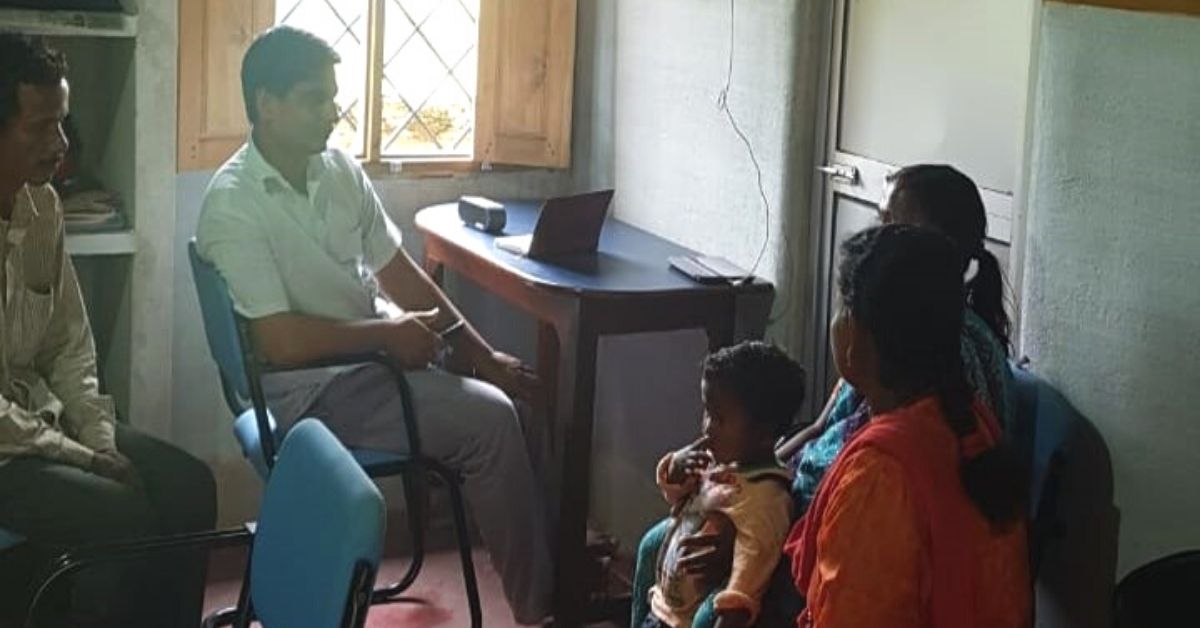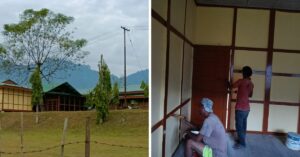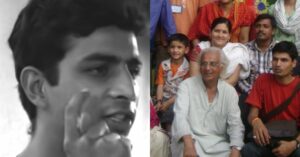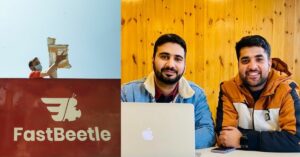Doctor Couple Innovate Steps to Reduce Infant Mortality, Model Now Replicated in 50,000 Villages
Dr Prasanta Tripathy and Dr Nirmala Nair quit their jobs and launched Ekjut, an NGO that works to reduce infant and maternal mortality rates in Jharkhand and save thousands of lives among tribal communities

About 30 of the 1,000 infants born in Jharkhand die every year, as per a government study from 2018. In 2013, 37 deaths were reported in every 1,000 births.
Over the years, Jharkhand has shown significant improvement in maternal mortality rates, which stood at 312 every 1,00,000 live births during 2004-06 and 113 during 2016-18.
Behind these promising changes by the government, there is possibly a small but significant share of a couple who have spent over two decades working to reduce infant and maternal mortality rates, saving thousands of newborn babies and mothers.
By the community, for the community

Dr Prasanta Tripathy (70) and Dr Nirmala Nair (68) were working with Tata Steel, a steel producing company in India. “While working in the small village in Jharkhand, closely witnessed the state of infant and maternal mortality in rural areas. Dr Nirmala had conducted a study on maternal deaths and the results were so worrisome that we decided we wanted to work to better the lives of the tribal and rural community through our knowledge and skills,” Dr Prasanta tells The Better India.
In 2002, both quit their jobs and shifted to a small railway township in Chakradharpur in Jharkhand, their native place. “We had taken so many learnings from the place which had benefited us professionally that we decided it was time we both give back by our means. Urban areas cater to the privileged population, but our work with tribal people showed how the need for medical care had increased in rural areas. It was important for us to spend more time in the villages,” he explains about the decision to move base.
But reaching out to the tribal community was a challenge for them, as the couple were outsiders. “We did not even know the languages, and it took us time to become familiar with the local dynamics and develop relationships. We set up a tiny clinic in West Singhbhum district to attend to the medical needs of the locals,” he explains.
However, rumours spread in the area about the possibilities of the couple coming from urban space wanting to set up a nursing home for commercial gains. “Some thought we were planning to conduct medical experiments and had many doubts about our work,” he says.
Dr Prasanta says that the existing poor medical services and a handful of wellness centres had forced people to handle many health conditions at home. “So when we arrived, some of them approached us to discuss their health issues. In the early days, some tribal people were saved from dying. Later on, apart from approaching us for medical needs, the locals started talking about the health issues in the community at large,” he adds.
Remembering vividly, Dr Prasanta says that it was the first time in 2003 they crossed the river to Narangabeda village to discuss the possibility of working with the Ho tribal community to improve the latter’s health condition in a participatory way with women’s groups. That is when Ekjut came into being and started partnering with rural communities.
“We spoke to the villagers about identifying problems, their causes, effects, feasible solutions to solve them and how we could put it into practice. As a pilot project, we started in three villages,” Dr Prasanta says.
He adds, “We did not want it as a top-down approach where we share knowledge and skills and the community absorbs through a one-way channel. We formed groups and encouraged peer learning, building solidarity and problem-solving.”
Dr Nirmala says the community members discussed personal issues and understood the underlying and immediate causes of the problems through interactive games, storytelling, picture cards and role-plays. “They would come up with the solution after understanding the cause for the poor health indicators. For example, once a four-year-old girl experienced pain in her stomach and bloating due to worms. Her health worsened after the family thought that it was due to some superstitions. However, she received timely treatment and survived,” she says.
She adds that such experiences turned into discussions among members. If any person faced similar issues, they learned to approach a doctor instead of managing it by themselves or neglecting it entirely.
Recalling another incident, Dr Nirmala says that an infected blade used during childbirth caused complications in the newborn child. “They realised that using a new blade or sterile equipment could save the child from infection. About 80% of the problems are preventable, and the solutions can be simple,” she adds.
She says that the exercises evolved as a group therapy model where problems were shared and potential solutions were brainstormed through healthy discussions. “It required minimal intervention in terms of facilitation,” Dr Nirmala says.
By 2008, about 200 villages in West Singhbhum and Saraikela districts of the state and Keonjhar in Odisha reported a drop in infant mortality by 45%, maternal mortality by 20%, and a decrease in postpartum depression by 57%. This was recognised by The Lancet, a rigorously peer-reviewed medical journal. In 2015, Ekjut was recognised by the WHO as a Public Health Champion
Dr Prasanta says, “Our early success was merely based on plucking the low-hanging fruits. The interventions made were mainly preventive, which could help save the babies and mothers. The project has extended to 30,000 villages since the state government recognised our efforts and replicated the model. Similarly, the Madhya Pradesh government has also scaled up the process in 37 high priority blocks of the state.”
The model has been tried in Odisha, Rajasthan, Madhya Pradesh, and Bihar and has benefitted a large rural population across 50,000 villages, Dr Prasanta says.
‘Need more than one NGO’

He adds, “By then, we had realised that besides addressing survival rates, it was important for the two entities to thrive and the community to transform. We started taking action to fight malnutrition and introduced creches for children where they could benefit with healthy food, get medical attention and access to early childhood care and education.”
The couple sought financial help from government schemes to support their cause. “The creches were set up near homes, where the community joined hands to ensure nutrition for the children, a space for them to grow in a favourable environment that was safe, and allowed them to play and learn,” he says.
In recent years, Ekjut has worked towards addressing other issues such as mental health, and gender-based violence, as well as debunking myths and superstition through participatory learning and action (PLA), an evidence-based approach.
Dr Nirmala says that community members now recognise and relate to the instances of domestic violence and are willing to talk openly about what happens within the walls of their homes. They not only report but also seek help.
There are many issues to be addressed, and the work requires more than one NGO and many experts to resolve them, she notes. The key would be to understand the cause of the issue and uproot it,” she adds.
Edited by Divya Sethu
This story made me
- 97
- 121
- 89
- 167
Tell Us More
We bring stories straight from the heart of India, to inspire millions and create a wave of impact. Our positive movement is growing bigger everyday, and we would love for you to join it.
Please contribute whatever you can, every little penny helps our team in bringing you more stories that support dreams and spread hope.



















